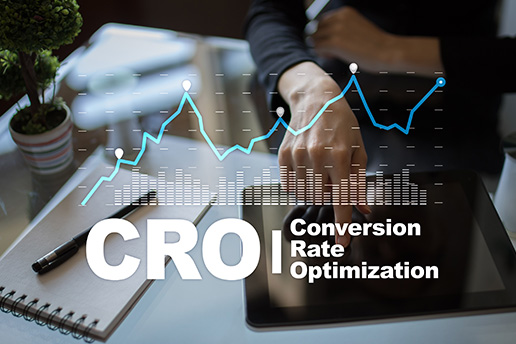Search engine optimization or SEO helps your website rank higher for your targeted keywords and increase its online visibility. Search engines will place your website at the top of the SERPs when people search online for a product or service or answer to their questions provided the search or product is relevant to the website’s subject matter.
But is it really that important? After all, if you can just use Google ads to reach more people, then why use your money on SEO marketing? Despite what you think, SEO has a far greater impact on your marketing strategy than you realise. In this article, we will show you why SEO is important and the ways to tell if your SEO tactics are actually working. Let’s dig in.
What is SEO?
SEO is simply a set of rules that allows you to optimize a website following a few strategies so it can rank higher in Google SERPs. It helps you increase your website’s online visibility and attract more organic traffic to your website.
SEO or search engine optimization has two important goals. First, to figure out what people are searching on the internet. This way, SEO can help you create high-quality content that matches the search intent of your target audience.
Second, to help you optimize your website in a way that allows Google to find your web pages easily and index them.
To increase your website’s SEO score, it must be user-friendly, easy to navigate and have a faster loading time. Here’s a list of a few important tasks that can help you do it:
- Find what your target audience is looking for on Google.
- Develop quality content that meets your target audience’s expectations.
- Implement the right SEO tactics that will help search engine crawlers find your web pages easily and deliver quick SEO evaluations.
So, you can consider SEO to be a complete framework that has a number of different rules, techniques, and stages of implementation. And its final goal is to improve your website’s ranking in SERPs and bring more high-quality organic leads to it.
Why is SEO Important?
These days, where countless businesses are focusing on paid ads to drive traffic, gaining organic leads through SEO tactics has become more important than ever. Every day, there are hundreds of millions of people perpetrating billions of Google searches to find solutions to fix their problems.
If you have a blog, a business website, or an e-commerce store, you can use SEO techniques to get high-quality leads in the long term.
Here’s a list of points that will help you understand why SEO is important
- Almost 70% of all Google users are more likely to go to one of the top five web results in SERPs. So, if you want to be one of these top five websites and drive more traffic to your website, you must focus on SEO.
- SEO techniques also concentrate on improving your website’s quality and content. People are more likely to spend more time on highly optimized websites. If you operate an e-Commerce store, the audience is more likely to buy from your SEO-optimized website that has solid built-quality and faster page loading speed.
- Constantly showing up at the top of the search results for the relevant keywords slowly builds trust. Increasing your website’s trustworthiness is one of the most prominent importance of SEO
- Using SEO marketing tactics can put your website ahead of its competitors who are just using PPC or paid ads to promote their websites and services. If two websites offer similar services, the website that is SEO-optimized will get more traffic and sales.
Important Metrics That Show If Your SEO Tactics are Working
Sure, SEO marketing strategies are a great way to improve your search engine rankings. But how would you know if your current SEO strategy is actually working well?
To measure if your SEO efforts are paying off, you can use a few crucial metrics or KPIs like page traffic, bounce rate, and average visit duration to check your website’s current performance. You can use Google Analytics and other third-party software to measure different KPIs.
Putting everything aside, let’s see if these KPIs can help you determine the success of your SEO campaigns.
Website Traffic
Let us start with something plain and simple. If people are not visiting your website even after 3 -6 months, it is safe to interpret that your SEO strategy is not working at all. The reason we can draw this conclusion is that if your website was perfectly SEO-optimized, it should start showing up on the first page of the Google search results after a few weeks.
And ranking higher on the search result should directly translate into more website traffic. It would mean that you’ve implemented SEO in the right way.
Now, the number of visitors you get to your website doesn’t really affect your SEO rankings directly. However, the CTR or the click-through rate does.
So, if you don’t have enough traffic, your website won’t achieve a high CTR.
A large amount of website traffic will help you achieve a loftier CTR. The higher CTR will help you rank higher on SERPs, which will allow you to get more traffic in return.
As you can see, website traffic is important. And you can get more web visitors if your SEO plans are working well for your website. Plus, you can easily measure this performance metric using Google Analytics.
Average Duration of Visits
The average duration of visits is yet another metric that can determine if SEO is working for your website. And you can easily measure it using Google Analytics.
Before you start optimizing your website for SEO, the average duration of web visits may have been on the lower side. This may happen either because your content wasn’t interesting enough for the visitors or the content quality was low.
That’s why one of the most important parts of SEO optimization is actually creating high-quality content. The average duration of a web visit should increase once quality content is created and optimized for SEO.
It means people are finding your content interesting. Thus, they are spending more time on your website browsing the content. Google will note this increase in the average duration of page visits and slowly improve the SEO score of that particular web page. As a result, your website will rank higher on SERPs for your targeted keywords.
Bounce Rate
Bounce rate is simply the percentage of people who decide to leave your website just after visiting a single page. Google search algorithms will simply think that the visitors didn’t find what they are looking for. So, they just went to the Google search result page once again.
Having a high bounce rate is detrimental to your website’s search engine ranking. Apart from low-quality content, people may also leave your website because of slow loading speed, poor web design, too many pop-ups, and a lot more.
That’s why it’s important to follow SEO guidelines and make your website more user-friendly. If your SEO efforts work well, the bounce rate should slowly decrease over time.

Conversion Rate
Who doesn’t want to see their leads convert and bring them more revenue? One of the reasons SEO is important in digital marketing strategies is because of its ability to drive high-quality leads to a website that has a high conversion rate.
So, if your conversion rate is high, it means your SEO efforts are paying off.
The SEO strategies work together to bring your website to the top of the search engine results. It means more traffic and higher CTR. Plus, proper SEO implementation should lower the bounce rate and increase the average time of page visits, which should ultimately lead to higher conversion rates.
Wrapping It Up
By now, it should be clear to you why SEO is important and how to figure out if it’s working for your website. If you follow the proper SEO marketing strategy and optimize your website and content in the correct way, you will get the following:
- Higher ranking in SERPs
- More website visitors
- Increased duration of page visits
- More page visits and lower bounce rates
- Higher CTR and more conversions
While you can do the most basic on and off-page optimization yourself, you must rely on SEO experts for more advanced SEO optimizations.









